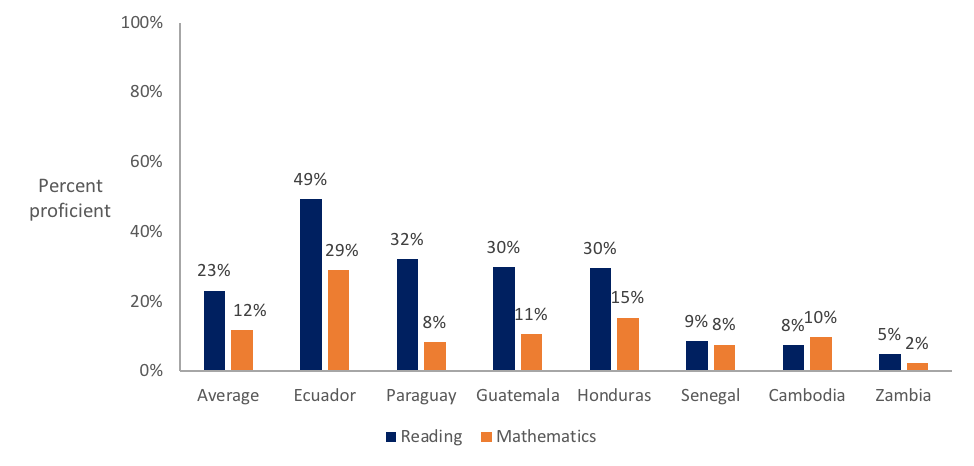Girls’ education got attention from the Academy when “Period. End of Sentence” won an Oscar for documentary short. “A period should end a sentence, not a girl’s education,” the filmmakers implore. While we couldn’t agree more with the sentiment, unfortunately sanitary pads are far from sufficient for giving girls an education (if they make a dent on education outcomes at all).
Indeed, some of the most daunting challenges for girls and their education have little to do with gender. They have to do with school systems that are failing to teach students. While this isn’t by and large a gendered problem, it is a girls’ problem. The latest evidence of this comes from the results of PISA for Development, which indicates that “Learning is lower, and the need for improved learning greater, than indicated even by the most thorough current attempt to compare countries internationally.” Low learning cuts across rich and poor in many countries, as this blog and paper highlight. ”Achieving universal literacy and numeracy to accomplish even a minimal standard of global absolute equity will require more than just closing the rich-poor learning gap, it will take progress in learning for all.”

Solving the learning challenges is crucial, but far from straightforward. For instance, a recent article in The Economist highlights the complexity of deciding the language in which children should be taught. Parents demand English instruction, even though research shows that instruction in mother tongue leads to better outcomes (including to better English outcomes). And yet it’s not always easy or obvious how to deliver instruction in mother tongue in multilingual countries.
Another daunting challenge for girls is that learning and schooling alone are not enough to overcome gender barriers. For instance, another recent article from The Economist discusses the decline of female labor force participation in India despite the increase in education for women (a problem that appears to be even worse for rural women in India). It describes a program run by Breakthrough that gives “lessons about gender stereotypes to 11- to 13-year-olds.” A recent evaluation shows that the program is making a dent in how students view gender norms. For example, boys who attended the class “were much less likely to agree that women ought to be housewives, and that men should get the final say on decisions.”
For a great set of background slides on gender inequality in India that set the context for this work (e.g. did you know that girls are breastfed for a shorter duration than boys in India?), check out this twitter thread. For an even broader look and gender inequity across countries around marriage, options outside marriage, and laws and cultural norms, here is a good summary of the book Towards Gender Equity in Development.
The Forum for African Women Educationalists (FAWE) and VVOB are banking on tackling gender stereotypes even earlier. Their new toolkit on gender-responsive pedagogy for early childhood education aims to counter the strong gender biases that take root in children ages 3 to 7. “The toolkit enables teachers of the early years to not only become aware of their gender biases and overcome them, it also supports them to proactively challenge budding gender stereotypical ideas in their learners.”
Looking for other efforts that will drive impact for girls? Want to know how to evaluate whether they’re effective? Check out J-PAL’s Executive Education course on Evaluating Social Programs. Applications due here by Friday, April 12, 2019.
